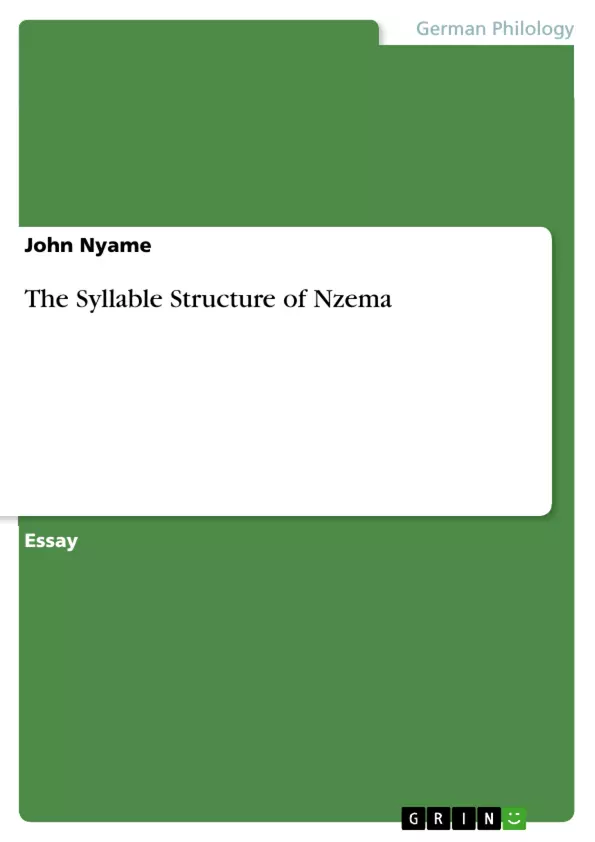The primary aim of this work is to review the syllable structure of Nzema as outlined in Annan (1980). What the reviewer seeks to come out include among others answers to the following questions. Is a semi-vowel (glide, j) and a vowel a V or CV type of syllable? Do all syllables in Nzema have meaning and is syllabic nasal (N), always in word initial and medial and not final?
Inhaltsverzeichnis (Table of Contents)
- ABSTRACT
- INTRODUCTION
- Nzema Syllable Structure
- One vowel syllable type
- Semi-vowel & vowel syllable
- Long vowel syllable
- Vowel sequence
- CV syllable
- CV (short)
- CV:
- CV (where C is a digraph)
- N (syllabic nasal)
- Discussion/ Conclusion
- Bibliography
Zielsetzung und Themenschwerpunkte (Objectives and Key Themes)
This work aims to review the syllable structure of the Nzema language, building upon the existing work of Annan (1980). The review seeks to address specific questions regarding the nature of syllables in Nzema, including the classification of semi-vowels and vowels, the meaningfulness of individual syllables, and the role of syllabic nasals within the language.
- Syllable Structure in Nzema
- Classification of Syllable Types
- Role of Semi-vowels and Syllabic Nasals
- Analysis of Syllable Meaning
- Comparison with Other Languages
Zusammenfassung der Kapitel (Chapter Summaries)
- ABSTRACT: This section presents the main objective of the review, which is to examine the syllable structure of Nzema as outlined by Annan (1980). It highlights key questions the review will address, such as the categorization of semi-vowels and vowels, the meaningfulness of individual syllables, and the role of syllabic nasals.
- INTRODUCTION: This section introduces the concept of syllables and the challenges in defining them. It explores existing definitions from various scholars and highlights the importance of vowel sounds in syllable structure. It then introduces the specific focus of the review, which is the syllable structure of the Nzema language.
- Nzema Syllable Structure: This section delves into Annan's (1980) classification of Nzema syllables, which consists of two main components: onset and rhyme. It elaborates on the different syllable types, including vowel (V), consonant-vowel (CV), and syllabic nasal (N) syllables, with further categorization within each type. Examples of each syllable type are provided with explanations.
- Discussion/ Conclusion: This section presents a discussion of Annan's work, highlighting the thoroughness of his analysis and acknowledging the contribution of his work to understanding the syllable structure of Nzema. It also identifies a potential shortcoming in Annan's classification, which concerns the categorization of glides and vowels as a V syllable.
Schlüsselwörter (Keywords)
The core focus of this work is on Nzema syllable structure, encompassing the analysis of syllable types, particularly the classification of vowel, consonant-vowel, and syllabic nasal syllables. The review also addresses the roles of semi-vowels, digraphs, and tone in Nzema syllable structure. The work draws upon and evaluates the existing scholarship on Nzema phonology, particularly Annan's (1980) study, and explores the broader implications of syllable structure across languages.
- Quote paper
- John Nyame (Author), 2017, The Syllable Structure of Nzema, Munich, GRIN Verlag, https://www.grin.com/document/387368



